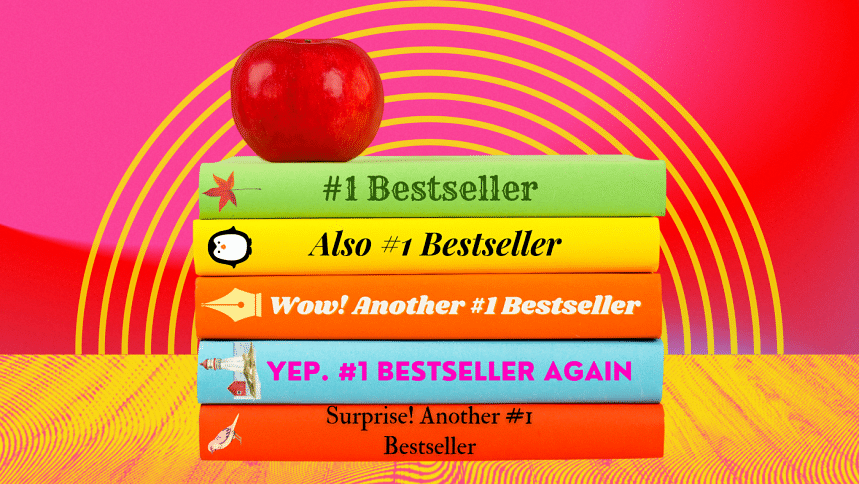Debunking the myth of the bestsellers

The title of a "number one bestseller" suggests exclusivity, and that every book out there shouldn't be worthy of this name. Yet, despite how it sounds, bookstores are flooded with number one bestsellers.
But how can every book be in the top position?
The first thing to understand about bestsellers is that they're based on lists, and there are many organisations who rank books. The one managed by The New York Times is usually lauded as being the most renowned one out of them all. They explain that they separate their lists by genre (fiction, nonfiction, children's) and the medium in which they are available in (hardcover, paperback, e-books). Because of this, multiple books CAN in fact be a "number one bestseller" at the same time.
Their lists update every week. The ranking is based on the number of sales each book has amassed in the tracking week, which is from Sunday to Saturday. New books are published every day, and the rankings change according to the sales in the tracking week. So, the same book won't stay number one forever, and will be replaced by new arrivals. If a book sells well enough any week, there's a chance that it might enter the bestsellers list, or maybe even be ranked number one.
As for the coveted title, even that one week in the number one position is enough for a book to earn it. Once a book has reached that milestone, it has won the right to call itself that on every other edition of the book that is printed in the future.
As previously stated, there are multiple bestseller lists. Amazon also keeps their own list, which is updated hourly, and is split in over thirty genres. This means, if a book gets to be number one on that for an hour, it is still technically a number one bestseller.
It is worth mentioning that not every number one bestseller will specify which list they got their position in, so it could be either of these two mentioned, or a completely different one altogether, which uses different and probably less-demanding criteria.
On the off chance a book doesn't reach number one, it can just get away with calling itself a bestseller, too, without specifying its exact ranking. After all, seeing a sticker with the words "the 21st bestseller" doesn't quite have the same feel, so they can just omit the number in that case.
Additionally, if you take a good look at some of these books, a few actually say they're written by a number one bestselling author. An author with just one bestseller to their name can continue publishing more new books under that title. In these cases, the book itself isn't the bestseller, it's just that one or more of the author's previous works has had that title. Many people don't read past the magic word, and don't think twice about what it actually says. The brain fills in the rest of it for us, and we assume that it is a bestseller.
At the end of the day, the bestseller tag is mostly just a marketing tactic. Even though it might be tempting to buy the latest new bestseller, keep in mind that it's simply just a metric for how many sales a book got over a certain period of time, and says nothing about the quality of it.
Reference:
The New York Times (September 23, 2020). A Lot of Data and a Little Singing: How The Times's Best-Seller List Comes Together.
Namreen is sick and tired. Send a reminder that life goes on at: [email protected]

 For all latest news, follow The Daily Star's Google News channel.
For all latest news, follow The Daily Star's Google News channel. 









Comments